Why samsung fridge not turning on after power outage? Actionable Tips
We may earn affiliate fees for purchases using our links (at no additional cost to you).
Is your Samsung fridge refusing to turn on after a power outage? Don’t panic! We understand the frustration that comes with this issue.
In this article, we’ll explore the common causes behind a non-responsive Samsung fridge and provide practical solutions to get it up and running again.
Stay tuned to uncover troubleshooting steps, power supply checks, and expert tips to address the problem. Let’s dive in and bring your fridge back to life!

Why samsung fridge not turning on after power outage?
Is your Samsung fridge failing to turn on after a power outage? Don’t worry.
Follow these in-depth instructions to restore power to your Samsung fridge and ensure it’s back up and running in no time.
Step 1: Check the Power Supply
First things first, let’s verify the power supply to your fridge. Ensure that it’s properly connected to a working electrical outlet.
Check for any loose connections or tripped circuit breakers. If necessary, try plugging in another device to the same outlet to confirm if there’s a power supply problem.
Step 2: Inspect the Control Board
The control board is a vital component of your Samsung fridge. Look for any signs of damage or burnt marks on the board.
If you spot any issues, it may need to be replaced. In some cases, simply resetting the control board can resolve the problem.
Refer to your fridge’s manual for instructions on how to perform a reset.
Step 3: Test the Start Relay
The start relay is responsible for supplying power to the compressor. If it’s faulty, your fridge may not turn on.
Use a multimeter to test the start relay for continuity. If it fails the test, you’ll need to replace the relay.
Step 4: Examine the Defrost Timer
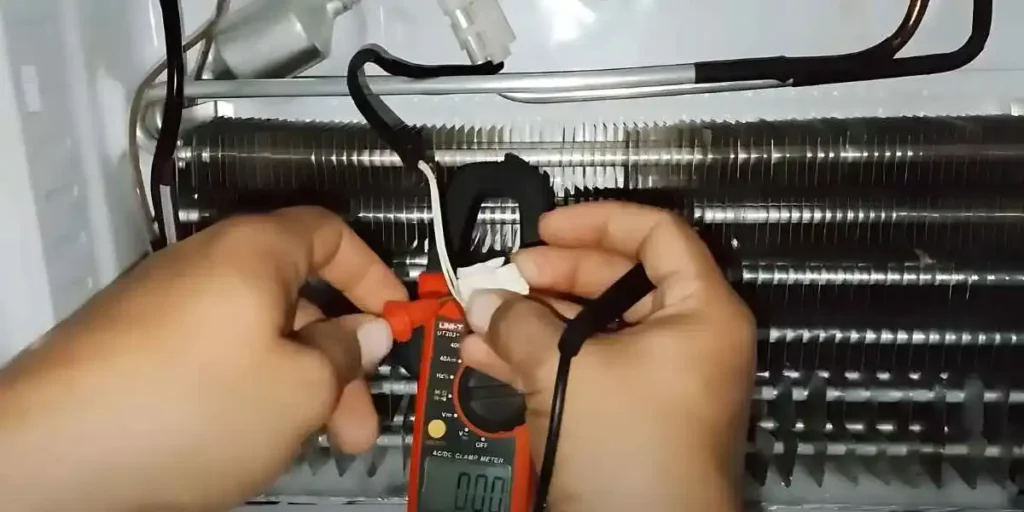
The defrost timer regulates the defrost cycle in your Samsung fridge. If it malfunctions, it can prevent the fridge from turning on.
Locate the defrost timer and check if it’s stuck or damaged. If necessary, replace the defrost timer to restore proper functioning.
Step 5: Assess the Temperature Control Thermostat
The temperature control thermostat monitors the temperature inside your fridge and signals the compressor to start or stop cooling.
If it’s defective, your fridge may not turn on. Use a multimeter to test the thermostat for continuity. If it doesn’t show continuity when adjusted, it needs to be replaced.
Step 6: Verify the Door Switch
The door switch plays a crucial role in detecting when the fridge door is open or closed. If the switch is faulty, it can prevent the fridge from turning on.
Test the door switch using a multimeter to check for continuity. If it’s not functioning properly, you’ll need to replace the door switch.
Step 7: Contact Samsung Customer Support
If you’ve followed all the steps above and your Samsung fridge still isn’t turning on, it’s time to reach out to Samsung’s customer support.
Provide them with all the relevant details and they will guide you further with warranty options or professional repair services.
Common Causes of Power Outage-Related Issues in Samsung Fridges
Power outages can sometimes lead to issues with Samsung fridges, causing them to malfunction or fail to turn on.
Understanding the common causes behind these problems can help you troubleshoot and resolve them effectively. Here are some possible culprits to consider:
1. Power Surge Damage
During a power outage, when the power is restored, it can sometimes result in a power surge.
This sudden surge in electricity can damage electronic components, including those in your Samsung fridge.
The power surge may cause issues with the control board, compressor, or other vital parts, leading to a non-responsive fridge.
2. Tripped Circuit Breakers
Power outages can occasionally trip circuit breakers in your home’s electrical panel.
If the breaker that supplies power to your fridge trips during an outage, it may prevent the fridge from turning back on once the power is restored.
Check the circuit breakers and reset any that have been tripped.
3. Faulty Power Outlet
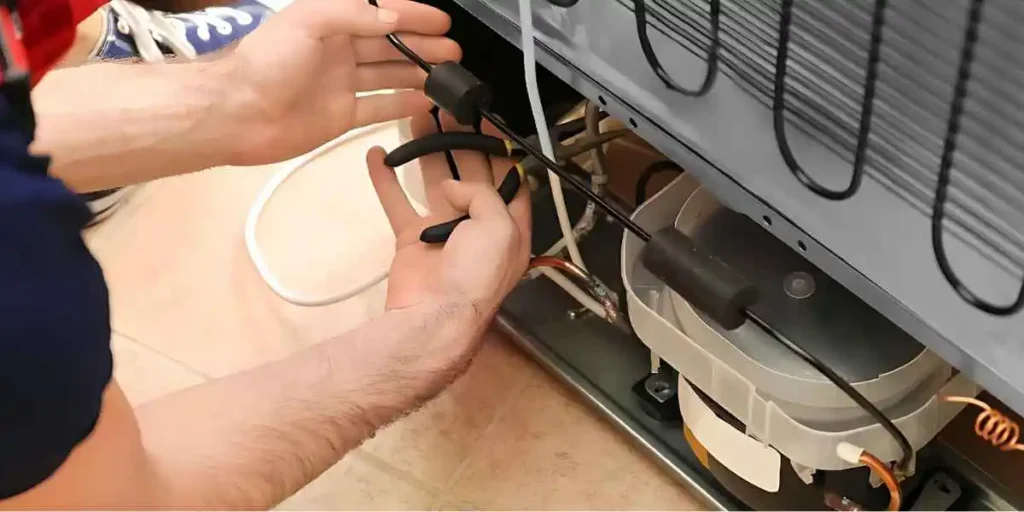
Another possible cause is a faulty power outlet. If the outlet where your fridge is plugged in becomes damaged or malfunctions during a power outage, it can prevent the fridge from receiving power.
Try plugging another device into the same outlet to verify if it’s functioning correctly.
4. Damaged Power Cord
Inspect the power cord of your Samsung fridge for any visible signs of damage.
During a power outage, the cord may have been inadvertently pulled or bent, leading to internal wire damage.
If the power cord is compromised, it won’t effectively deliver power to the fridge.
5. Control Board Malfunction
The control board is the “brain” of your Samsung fridge, regulating its various functions.
A power outage can sometimes cause the control board to malfunction or become damaged.
If the control board fails, it can result in the fridge not turning on or responding to commands.
6. Compressor Issues
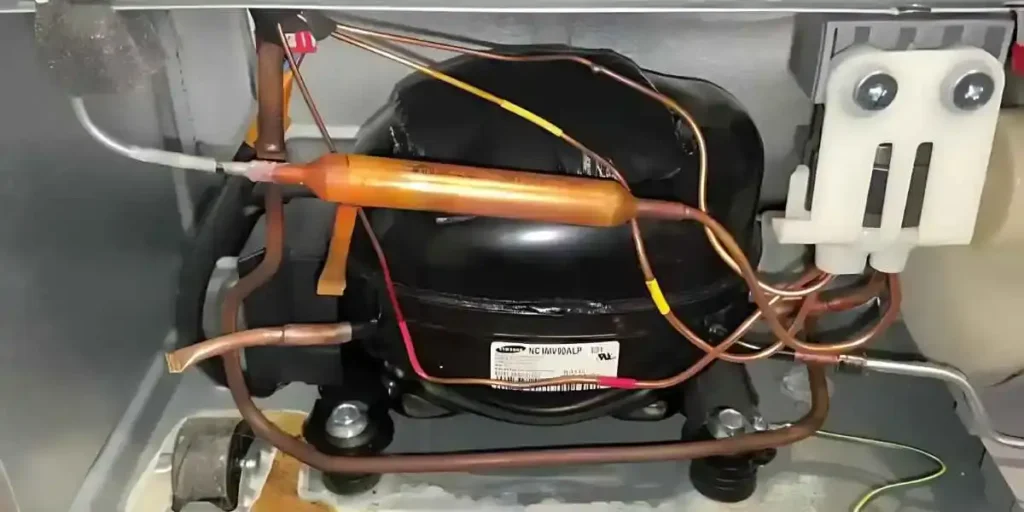
The compressor is responsible for cooling the fridge. Power outages can sometimes cause stress on the compressor or trigger internal damage, preventing it from starting properly.
If the compressor doesn’t operate as it should, your fridge may fail to turn on after a power outage.
7. Wiring Problems
Power outages can expose underlying wiring issues in your home. Faulty or damaged wiring can disrupt the power supply to your fridge, making it unable to turn on.
It’s essential to ensure that the wiring connections are secure and that there are no signs of damage or loose connections.
Resetting the Samsung Fridge: A Step-by-Step Guide
By following this step-by-step guide, you can effectively reset your Samsung fridge and address any issues that may have arisen after a power outage:
Step 1: Unplug the Fridge
To begin the resetting process, start by locating the power cord at the back of your Samsung fridge.
Reach behind and firmly grasp the plug, then pull it out of the electrical outlet.
This action will disconnect the fridge from the power source and initiate the reset procedure.
Step 2: Wait for a Few Minutes
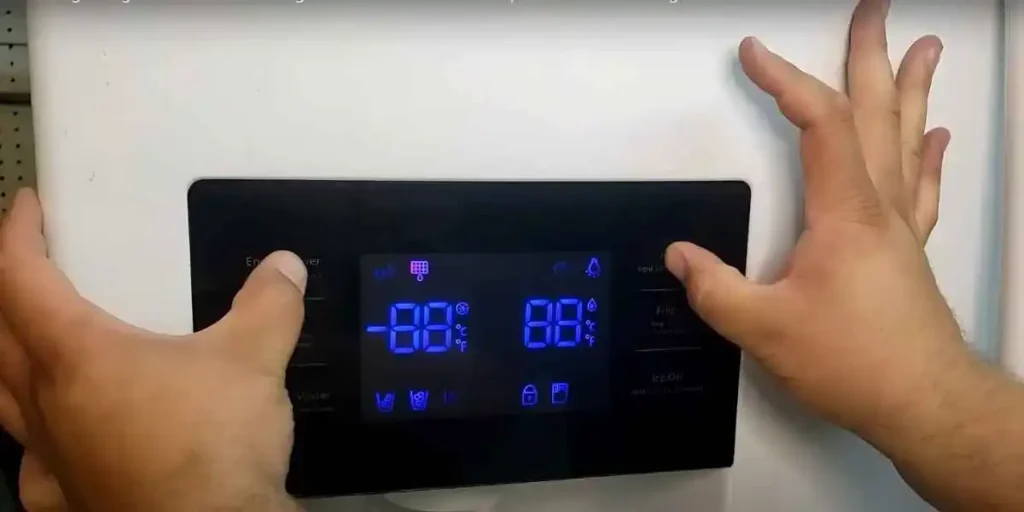
After unplugging the fridge, allow it to sit idle for a minimum of five minutes.
This waiting period helps to discharge any residual electrical charge within the refrigerator’s components and allows the internal systems to reset fully.
Step 3: Plug in the Fridge
After the waiting period, take the power cord of your Samsung fridge and insert it back into the electrical outlet.
Ensure that the plug fits snugly into the socket. The fridge will now be connected to the power source once again.
Step 4: Turn on the Fridge
Locate the power switch or control panel on your Samsung fridge. Depending on the model, the power switch might be located inside the fridge or on the exterior control panel.
Flip the switch to the “On” position or press the power button to initiate the startup process.
Step 5: Monitor the Fridge
Observe the fridge closely to check if it powers on and begins operating as expected. Listen for the familiar hum of the compressor and the sound of fans running.
Additionally, keep an eye on the control panel or temperature display to ensure it shows signs of activity and responds to your commands.
Step 6: Allow the Fridge to Stabilize
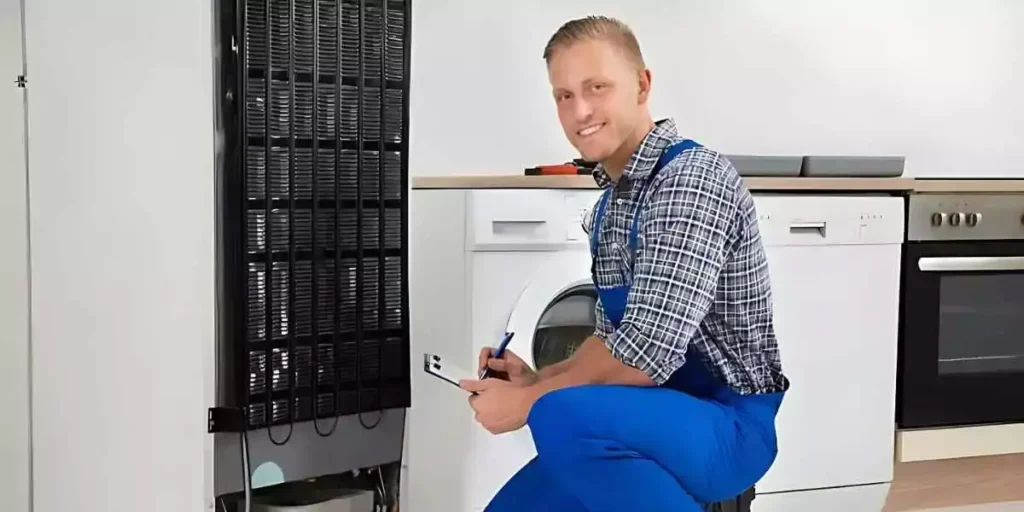
After resetting the fridge, it may take some time for it to reach its optimal temperature and stabilize.
Give the refrigerator approximately 24 hours to cool down and regulate its internal temperature.
During this period, avoid opening the fridge frequently to maintain consistent cooling.
Step 7: Check for Proper Functioning
Once the fridge has had sufficient time to stabilize, open the doors and inspect the interior.
Ensure that the cooling is adequate and that the temperature remains consistent throughout.
Verify that the lights inside the fridge are functioning correctly and that all compartments are cooling as expected.
How do I prevent Samsung fridge from turning off after power outage?
By following these steps, you can effectively prevent your Samsung fridge from turning off after a power outage:
Step 1: Install a Voltage Stabilizer

Protect your Samsung fridge from sudden power fluctuations during a power outage by installing a voltage stabilizer.
This device actively regulates the voltage supply, ensuring a steady and safe flow of electricity to your fridge.
Consult a professional electrician to select the appropriate voltage stabilizer for your fridge model and have it installed correctly.
Step 2: Connect to an Uninterruptible Power Supply (UPS)
Ensure uninterrupted power supply for your Samsung fridge by connecting it to an UPS.
An UPS provides temporary power backup during a power outage, allowing your fridge to continue running.
Select an UPS with sufficient capacity to support your fridge’s power requirements and provide backup for an extended duration.
Connect the UPS to your fridge using the appropriate power cables and ensure it is properly configured.
Step 3: Enable Power Outage Alerts
Some Samsung fridges offer the option to receive power outage alerts. Check your fridge’s settings and enable power outage alerts if available.
This feature notifies you when a power outage occurs, allowing you to take immediate action to prevent your fridge from turning off.
Set up the alerts by following the instructions in your fridge’s user manual or accessing the settings menu on the control panel.
Step 4: Invest in a Backup Power Generator

Consider investing in a backup power generator to keep your Samsung fridge running during extended power outages.
A backup generator provides a reliable and continuous power source, ensuring that your fridge remains operational.
Consult a professional electrician to determine the appropriate generator size and installation requirements for your home.
Follow the manufacturer’s instructions for proper setup, maintenance, and safe operation of the generator.
Step 5: Minimize Power Consumption
Reduce the risk of your Samsung fridge turning off during a power outage by minimizing its power consumption.
Ensure the fridge’s energy-saving features are activated, such as eco-mode or power-saving mode.
Keep the fridge well-maintained with regular cleaning, defrosting, and proper ventilation.
Avoid overloading the fridge with excessive items or obstructing the airflow inside.
FAQs
1. Can A Power Surge During A Power Outage Affect My Samsung Fridge?
2. What If Resetting The Fridge Doesn’t Solve The Issue?
If necessary, contact Samsung customer support for further assistance or consider professional repair services.
3. Should I Use A Voltage Stabilizer To Prevent Power Outage-Related Issues In My Samsung Fridge?
4. Can I Prevent Power Outage-Related Issues In My Samsung Fridge?
Conclusion
Ensure uninterrupted cooling and peace of mind with your Samsung fridge after a power outage.
By following the troubleshooting steps and taking preventive measures like using voltage stabilizers and connecting to an UPS, you can minimize the chances of your fridge not turning on.
Don’t let power outages spoil your food or inconvenience you. Take proactive steps to protect your Samsung fridge and keep it running smoothly even after power disruptions.
